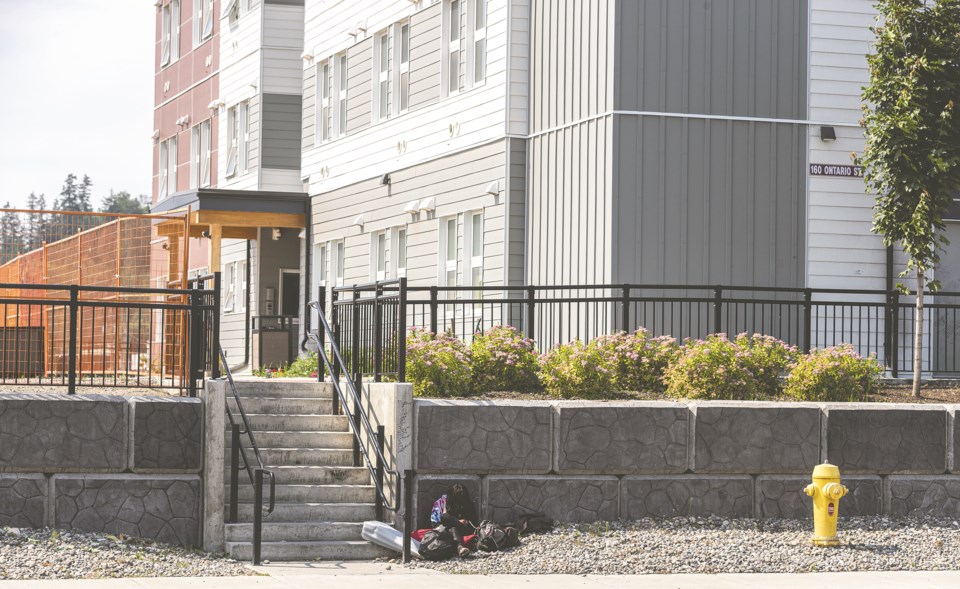The province is addressing concerns over staff and resident safety, drug exposure, and property damage in supportive housing, including in Prince George.
A limited-time working group has been established to respond to these concerns by acting on requests from housing providers for greater authority to address urgent safety issues.
One key request from supportive housing providers is the removal or review of the Residential Tenancy Act (RTA) as it applies to the more than 7,500 supportive housing facilities constructed since 2017.
Currently, many of these facilities operate under the RTA — the primary legislation governing landlord-tenant relationships for most residential properties in the province. This means people living in supportive housing are granted the same rights as those living in traditional rental buildings.
However, many — including Liz Vick Sandha, COO of Connective — say the act, as currently implemented, has hindered the safety of both residents and staff in supportive housing settings.
“People who live in supportive housing face more barriers than your average person,” said Sandha. “Especially in terms of securing housing and then being able to stabilize and maintain that housing.”
She added: “There are some challenges in using the Residential Tenancy Act in the supportive housing field. There’s value in reviewing it, because the challenges we face include the fact that the act has quite a long timeframe between when an issue is raised about a tenant and when it can be addressed through the arbitration process. Sometimes that delay can create excessive safety risks for both our staff and the tenants.”
One of Sandha’s main concerns is the lag between safety issues being reported and appropriate action being taken — a problem she says she’s seen firsthand in her organization’s facilities.
“We have a full range of policies and procedures to make sure staff are protected and supported throughout,” she said. “Sometimes situations occur that we couldn’t have planned for. There have been situations that we’ve had to learn from, and we make sure we’re reviewing them carefully and responding appropriately.
“Part of that is, if we’ve identified that one of our tenants can no longer stay in this program — for their own safety, for staff safety, or for the safety of neighbours — we want to be able to take action. Right now, the delay we experience between raising these issues and being able to act against someone who’s compromising community safety is too slow.”
While Sandha is critical of the current application of the RTA in supportive housing, she doesn’t advocate for it to be removed entirely.
“I don’t know if we’d be advocating for a complete removal,” she said. “I welcome the concept of having a group of experts come together to think through what other options there are. We use other options in other programs and we’d certainly be willing to explore them if they could be appropriate for supportive housing. If there were a particular arm of the Residential Tenancy Act specific to supportive housing, that would be valuable.
“If concerns could be fast-tracked, for example, I think that would equip everyone in the program — ensuring their rights to safety are upheld — while also allowing us, as the managing organization, to balance whose needs we can support and whose we can’t.”
Alongside this new initiative, the province is also working with WorkSafeBC and the BC Centre for Disease Control (BCCDC) to address the impact of the ongoing toxic-drug crisis on supportive housing.
Supportive housing facilities are often hotspots for drug trafficking and consumption, particularly involving fentanyl — which can be dangerous to inhale secondhand.
WorkSafeBC has issued guidelines stating that workers should not be exposed to air concentrations exceeding 0.3 micrograms per cubic metre for more than 30 minutes per shift, and never exceeding 0.5 micrograms per cubic metre at any time.
Following these standards, WorkSafeBC and the BCCDC have tested 14 supportive housing buildings in Victoria and Vancouver. Early results indicate that certain areas in some buildings have airborne fentanyl levels above the recommended limit.
Sandha said she supports the new testing initiative.
“I’m glad they’ve done the research to identify whether this is a genuine concern, or something people have worried about without fully understanding the evidence,” she said. “I’m glad it’s been identified, and that they’ve provided us with recommendations we can implement in our programs.
“This is something the whole of BC is navigating. We’re just happy to receive guidance on how we can keep our tenants and staff as safe as possible.”
Based on early findings, the province has proposed several measures to mitigate airborne drug exposure and other safety risks in supportive housing:
- Respiratory protection (personal protective equipment)
- Safety protocols and no-smoking policies
- Air scrubbers
- HVAC assessments (repairs/airflow improvements)
- Reduced suite entry (alternative protocols)
- Encouragement of overdose-prevention services



